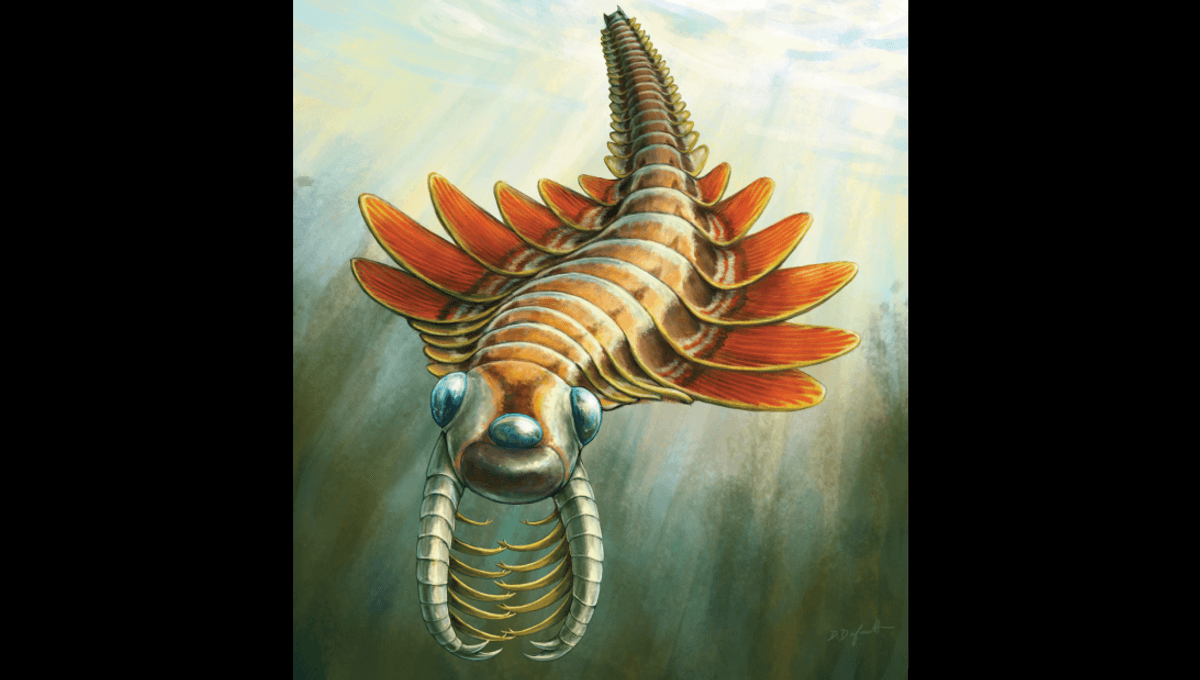
Some 506 million years ago, a three-eyed predator hunted in Earth’s oceans. Described by its discoverers as a “sea moth”, the new-to-science species was a kind of radiodont, one that had a feature not seen in any other member of this group. It was discovered by palaeontologists at the Manitoba Museum and Royal Ontario Museum (ROM) in the Burgess Shale of Canada, and lives up to the site’s reputation for yielding incredibly well preserved fossils.
“Very few fossil sites in the world offer this level of insight into soft internal anatomy,” said study co-author Jean-Bernard Caron, Richard M. Ivey Curator of Invertebrate Palaeontology at ROM, in a statement. “We can see traces representing bundles of nerves in the eyes that would have been involved in image processing, just like in living arthropods. The details are astounding.”
Radiodonts were group of animals that lived during the Cambrian. As a stem-group of arthropods, they came in suitably freaky designs with wacky eye morphologies and more wiggly bits than you could shake a stick at, but this one? It was truly unique.
It’s been named Mosura fentoni, and it was about the size of your index finger. In life, it prowled the ocean searching for prey with its three eyes, but that’s not even the big news. You see, it also had an abdomen-like body region that was made up of multiple segments at its rear, something that we’ve never seen in a radiodont before, but that has cropped up in other animal groups.
“Mosura has 16 tightly packed segments lined with gills at the rear end of its body,” added study lead Joe Moysiuk, Curator of Palaeontology and Geology at the Manitoba Museum. “This is a neat example of evolutionary convergence with modern groups, like horseshoe crabs, woodlice, and insects, which share a batch of segments bearing respiratory organs at the rear of the body.”
With a toothy circular jaw, it swooshed around the ocean using swimming flaps along its side. Sound a bit like flying? The palaeontologists thought so, too, which is why they nicknamed it the “sea moth”. That name then went one step further to inspire its scientific name, Mosura fentoni, in a fitting hat-tip to the fictional Japanese kaiju known as Mothra that appears in Godzilla.
While it looks quite moth-like, it’s only distantly related to our flappy friends. Alongside spiders, crabs, and millipedes, Mosura sat within a much deeper branch of the arthropod evolutionary tree.
“Radiodonts were the first group of arthropods to branch out in the evolutionary tree, so they provide key insight into ancestral traits for the entire group,” added Caron. “The new species emphasizes that these early arthropods were already surprisingly diverse and were adapting in a comparable way to their distant modern relatives.”
Not bad, you freaky frilly things.
The study is published in the journal Royal Society Open Science.
Source Link: New Species Of Three-Eyed “Sea Moth” Hunted In Earth's Oceans 506 Million Years Ago